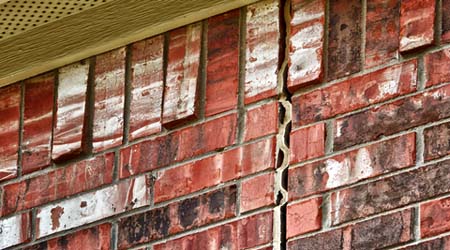 This is part two in our series of helpful tips from D.C.-area home inspector and Homemark Inc. president Mark Linebaugh. In the first post, we addressed doing a pre-listing inspection.
This is part two in our series of helpful tips from D.C.-area home inspector and Homemark Inc. president Mark Linebaugh. In the first post, we addressed doing a pre-listing inspection.
In this part, we’re addressing structural issues that Mark will look for to be in “normal working order.”
Of these, Mark says he looks for cracks anywhere—foundation, driveway, slabs, walls and any other part of the structure. Open grout lines are another indication of a possible problem. Mark also looks for “inner framing and resultant windows or doors not opening or closing properly.”
Settlement will happen in any home, or it can indicate a more serious problem. Mark also searches for “broken floor or ceiling joists, rafters or trusses and open tape lines and nail ‘pops’ due to settlement.”
For buyers, visible cracks, difficult-to-open doors and windows and other noticeable crevices might not mean a serious problem, but if you see them yourself, be sure let your inspector see them as well.
As a seller, if you notice any of these issues and detect any movement of your home, an inspector will likely find them as well. If you discover chronic problems such as foundation issues, bite the bullet and have them fixed before placing your home on the market. If you know about such issues—and your agent does—you both may be liable if you conceal a known defect.
Take the high road and address any known or potential structural problems before you sell, because it’s something you’ll likely have to fix sooner or later. If not, it will be a ticking time bomb that you just won’t want to worry about after you bid farewell to your home at closing.
Don’t miss Part 3 of our home inspection series where we address electrical issues.
Here’s Part 1, if you missed it!
